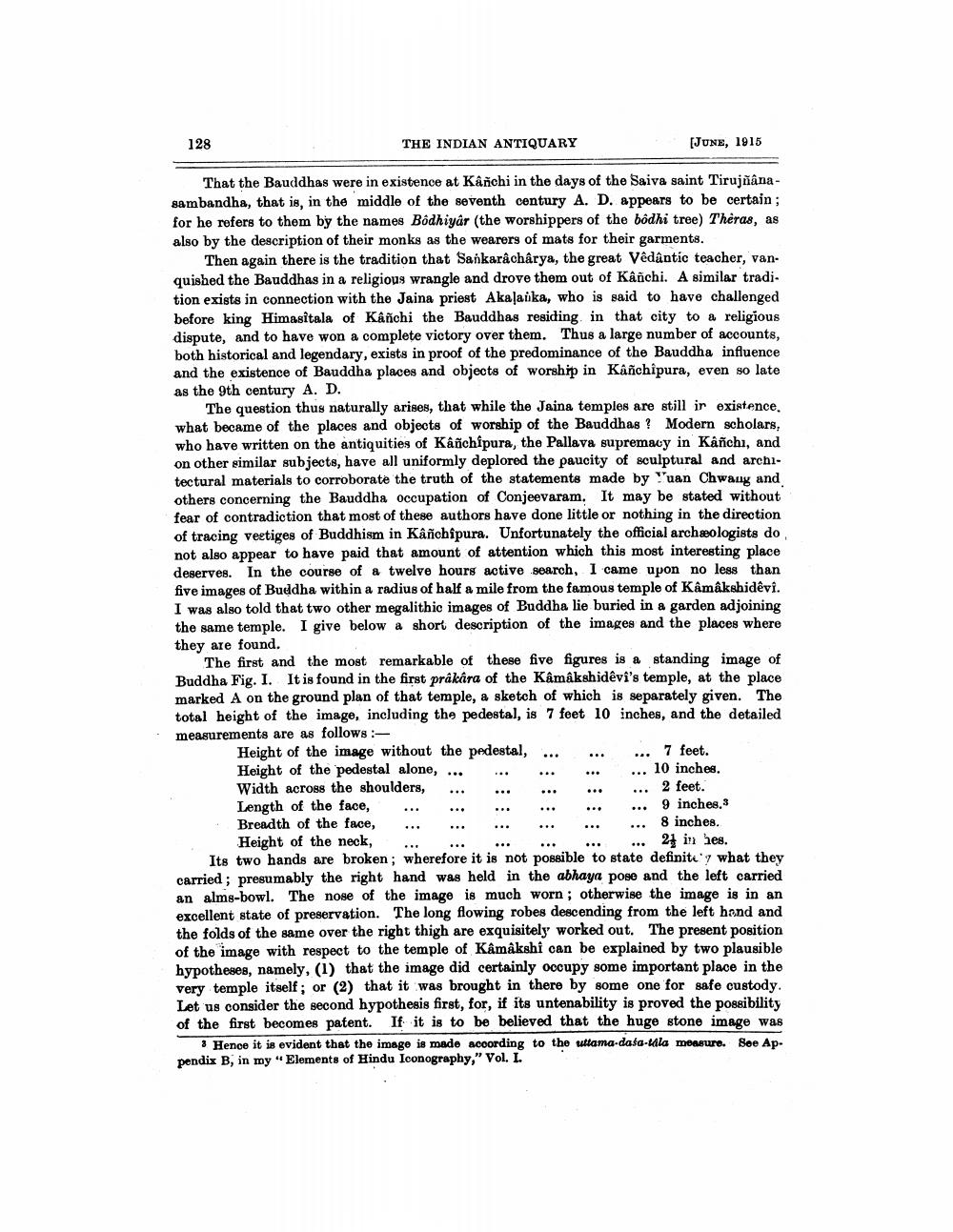________________
128
THE INDIAN ANTIQUARY
(JUNE, 1915
That the Bauddhas were in existence at Kânchi in the days of the Saiva saint Tirujñana - sambandha, that is, in the middle of the seventh century A. D. appears to be certain; for he refers to them by the names Bôdhiyar (the worshippers of the bôdhi tree) Theras, as also by the description of their monks as the wearers of mats for their garments.
Then again there is the tradition that Sankaracharya, the great Vêdêntic teacher, vanquished the Bauddhas in a religious wrangle and drove them out of Kanchi. A similar tradi. tion exists in connection with the Jaina priest Akaļaika, who is said to have challenged before king Himasîtala of Kanchi the Bauddhas residing in that city to a religious dispute, and to have won a complete victory over them. Thus a large number of accounts, both historical and legendary, exists in proof of the predominance of the Bauddha influence and the existence of Bauddha places and objects of worship in Kanchipura, even so late as the 9th century A. D.
The question thus naturally arises, that while the Jaina temples are still in existence. what became of the places and objects of worship of the Bauddhas ? Modern scholars, who have written on the antiquities of Kanchipura, the Pallava supremacy in Kanchi, and on other similar subjects, have all uniformly deplored the paucity of sculptural and architectural materials to corroborate the truth of the statements made by Yuan Chwang and others concerning the Bauddha occupation of Conjeevaram. It may be stated without fear of contradiction that most of these authors have done little or nothing in the direction of tracing vectiges of Buddhism in Kanchipura. Unfortunately the official archæologists do not also appear to have paid that amount of attention which this most interesting place deserves. In the course of a twelve hours active search, I came upon no less than five images of Buddha within a radius of half a mile from the famous temple of Kamakshidêvi. I was also told that two other megalithic images of Buddha lie buried in a garden adjoining the same temple. I give below a short description of the images and the places where they are found.
The first and the most remarkable of these five figures is a standing image of Buddha Fig. 1. It is found in the first prakára of the Kâmâkshidêvi's temple, at the place marked A on the ground plan of that temple, a sketch of which is separately given. The total height of the image, including the pedestal, is 7 feet 10 inches, and the detailed measurements are as follows: Height of the image without the pedestal,
... 7 feet. Height of the pedestal alone, ...
... 10 inches. Width across the shoulders,
... 2 feet. Length of the face,
... 9 inches, 3 Breadth of the face,
... 8 inches. Height of the neck, ...
... 21 in hes. Its two hands are broken; wherefore it is not possible to state definiti'y what they carried; presumably the right hand was held in the abhaya pose and the left carried an alms-bowl. The nose of the image is much worn; otherwise the image is in an excellent state of preservation. The long flowing robes descending from the left hand and the folds of the same over the right thigh are exquisitely worked out. The present position of the image with respect to the temple of Kamakshi can be explained by two plausible hypotheses, namely, (1) that the image did certainly occupy some important place in the very temple itself; or (2) that it was brought in there by some one for safe custody. Let us consider the second hypothesis first, for, if its untenability is proved the possibility of the first becomes patent. If it is to be believed that the huge stone image was
· Hence it is evident that the image is made according to the uttama-data-lila mouro. See Ap. pendix B, in my "Elements of Hindu Iconography," Vol. I.




